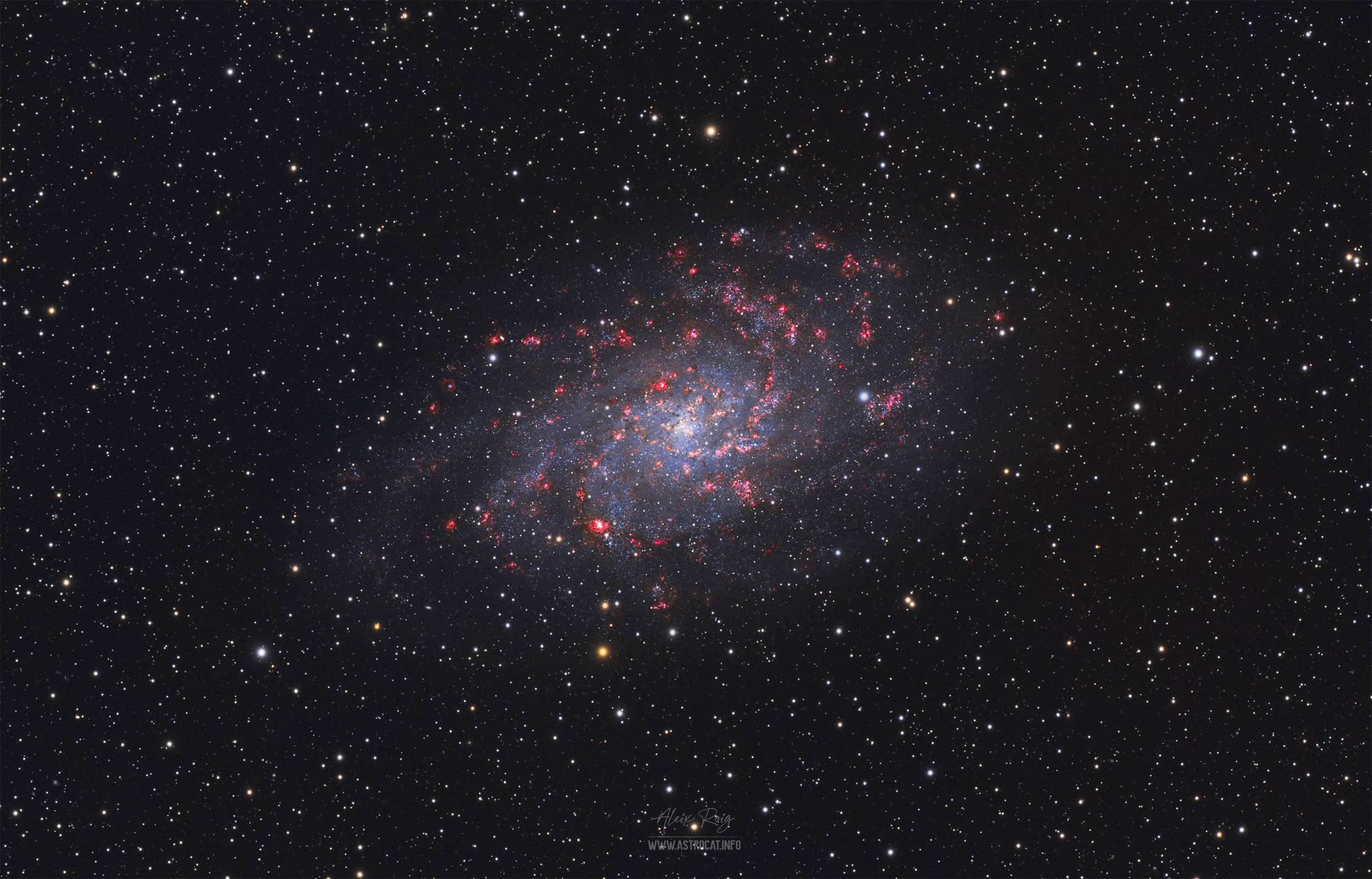Can we spot nebulae in another galaxy? Yes, with the use of Ha filters we can detect those star forming regions in our neighbour galaxies.
The Triangulum galaxy, M33, is located in the northern constellation Triangulum. As seen from Earth it has a really wide angular size thanks to its proximity to our Milky Way. M33 is over 50,000 light-years in diameter, and it’s located some 3 million light-years away from the Solar System, third largest in our Local Group of galaxies after M31 and the Milky Way.
If we inspect the image closely we can see tens of small blue clusters of stars. The pinkish regions are shown thanks to the use of a Ha filter that captures the emission data from these HII active star forming regions. The most apparent of those regions is NGC 604, the brightest in this galaxy (bottom left of the image).
To capture this colorful image I used my dual Takahashi setup. I gathered data from both FSQ’s (FSQ85 and FSQ106). The Luminance data was captured with both telescopes while the Ha and RGB data was captured with the FSQ85.
Thanks for your time on this website.
Image Details
FSQ106:
L 81×300″ (6h45′)
FSQ85:
L: 44×300″
Ha: 49×300″
RGB: (15,15,15) x 300″
Calibrated with darks, flats and dark-flats.
Total exposure: 16h
Moon at 10% (on average)
Image resolution: 1.46”/pixel
FOV (full image): 2º04′ x 1º19′
Equipment
FSQ106 EDX4 + ASI2600MM + LRGB Astrodon filters + Ha3nm Antlia – with ZWO EFW 7 pos
FSQ85 + ASI294MM + SHO LRGB Baader filters – with ZWO EFW 8 pos
Mesu200 mount
Guiding with ASI120MM and ZWO Mini Guide Scope
Software
SGP, PHD2, APP, PIX, LR, TPZ, PS.
Aleix Roig, March 2022
Prades (Tarragona, Catalonia – Spain).
Full HD image on Astrobin:
https://www.astrobin.com/gy5yfk/


